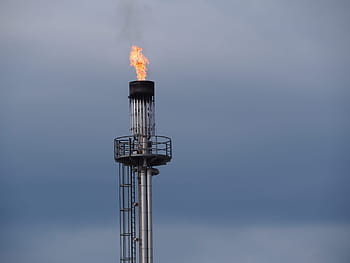-
Global Methane Report finds near-record levels emitted as change is coming, but not fast enough
Date posted:
-
-
-
Post Author
Patrick LaveryCombustion Industry News Editor
-
-

The International Energy Agency has released its Global Methane Report 2024, showing an increase in emissions from energy-related activities in 2023 compared to 2022, with a total of 128 Mt of the gas being emitted from oil, gas, coal and biomethane production across the world, just shy of the 129 Mt record set in 2019. (With methane being 28 times more potent a greenhouse gas over a 100-year period than carbon dioxide, the 2023 figure is around 3.6 Gt of CO2-equivalent emissions; over a 20-year period, methane is 84 times more potent, meaning 11.8 Gt of CO2-equivalent emissions.)
The United States, the world’s largest producer of oil and gas, was the highest emitter, followed by Russia, Iran, Turkmenistan, Venezuela, China, Algeria, Saudi Arabia, Canada, and Iraq, though the emissions intensity (compared to fossil fuel output) varied highly, with Venezuela and Turkmenistan being the worst performers.
As the report notes, there is a “high degree” of uncertainty around the figures, though data availability is improving: “some of the largest differences are between data based on measurement campaigns and scientific studies, and those reported to official public bodies and by companies.” For instance, while the IEA estimates that 84 Mt of methane was released worldwide from oil and gas operations in 2023, “the sum of country-level figures submitted by national governments to the UN Framework Convention on Climate Change is around half of this amount.”
Estimates based on company-level reporting are considerably lower again, at only ~5% of the IEA’s estimate. Some bias may come from companies that are better performers being the ones that actually report, while other under-reporting may come from using outdated estimates of activity or emissions factors, which amongst other things do not include mega-leaks.
This certainly points towards a shift to a reliance on satellite-based measurements of methane emissions rather than the ‘old’ way of making estimates, and oil and gas producers themselves are taking some steps to this effect. The Financial Times reports that the 12-member Oil and Gas Climate Initiative (which includes Shell, Saudi Aramco, and ExxonMobil) plans to extend a satellite monitoring program to detect leaks in emerging economies, having found 26 large leaks over Kazakhstan, Egypt and Algeria over the last year. The detections have led to the plugging of leaks or continuing work to stop them, reducing emissions, and, as reducing leakage is generally a cost-effective activity, there is a clear win-win for oil and gas companies in reducing such leaks – good public relations, and good business.
More generally, the IEA’s view is that if “all methane pledges made by countries and companies to date are implemented in full and on time, it would be sufficient to cut methane emissions from fossil fuels by 50% by 2030”, significantly short of the 75% needed by 2030 to be on target to limit global warming to not more than 1.5 °C.
Moreover, most pledges are not yet backed by implementation plans, suggesting less than 50% will be reduced by 2030. Nevertheless, satellite technology and increased accountability may help to accelerate action.
